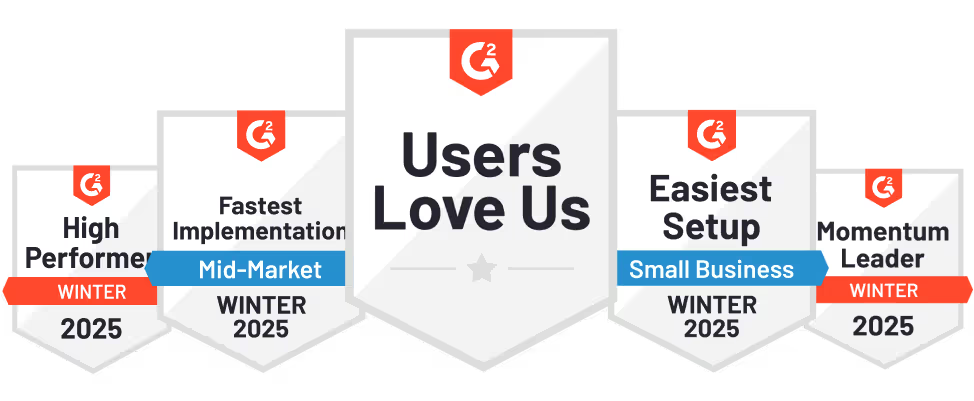You can have the perfect creative, a strong hook, and the right funnel setup, but if your targeting is off, it’s like sending a handwritten love letter to the wrong house.
Meta’s strength lies in its audience infrastructure. With billions of daily users across Facebook and Instagram, it’s less about “who’s on the platform” and more about how precisely you can reach the right ones, whether you're building awareness, nurturing leads, or converting bottom-of-funnel prospects.
Let’s break down the four key targeting options, and when to use each one.
1. Core Audiences: The basics
If you’re running prospecting campaigns without first-party data, this is where you start. Core audiences let you build targeting from scratch based on platform data, demographics, interests, behaviors, and location.
What you can target:
- Demographics: Age, gender, relationship status, education, language
- Location: Pinpoint by country, state, city, postal code, or radius
- Interests: Meta’s predefined buckets, from B2B software to wellness to luxury travel
- Behaviors: Purchase patterns, device usage, travel habits, etc.
Why it works:
- Great for early-stage startups or new product launches with no CRM data
- Enables you test positioning for different personas or geos
- Pairs well with top-of-funnel awareness and lookalike seeding
Example:
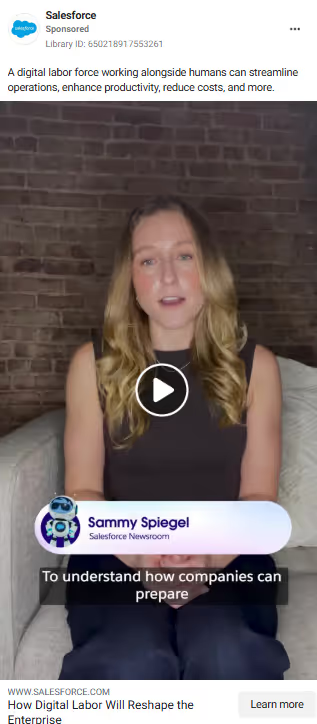
A Salesforce Video Ad can target mid-level operations managers aged 30–45 in Tier 1 cities, interested in productivity apps and remote work.
2. Custom Audiences: Your warmest leads, revisited
Custom Audiences are where the magic of retargeting happens. These users have already interacted with your brand, whether they visited your website, watched a video, or downloaded an asset.
Instead of shouting into the void, you're now tapping on shoulders.
Types of Custom Audiences:
- Website Visitors: Users who visited key pages (like your pricing or demo page) but didn’t convert
- Engagement-Based: People who watched 50 %+ of a video, saved a post, clicked on your ad, or DMed your page
- CRM Uploads: Your internal lists, newsletter subscribers, trial users, SQLs, past customers
Why it works:
- These audiences already know you, your job is to move them from interest to action
- High conversion potential at much lower CPLs than cold traffic
- Enables multi-touch nurturing through sequential ads
Example:
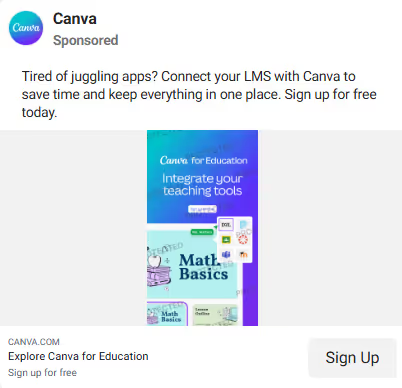
Canva, a PLG brand, can retarget users who visited the sign-up page but didn’t finish the form, serving a lead ad that offers a shortcut with fewer fields and a stronger CTA.
3. Lookalike Audiences: More people like your best ones
Lookalike Audiences use Meta’s machine learning to identify new people who resemble your most valuable users. It’s like cloning your top customers, just legally.
How it works:
You give Meta a high-quality ‘seed audience’ (e.g., paying customers, demo signups, webinar attendees). Meta then analyzes behavioral and demographic patterns to find people who look similar but haven’t interacted with you yet.
When it works best:
- Scaling your top-performing campaigns
- Testing new markets without having to start from scratch
- Building net-new pipelines using traits you already trust
Example:
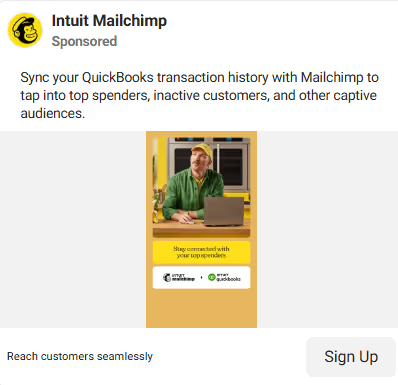
Intuit Mailchimp, an email automation platform, can create a Lookalike Audience from its top 500 paying customers and run ads targeting CMOs with similar traits in adjacent industries.
Best Practices:
- Use high-intent seed lists, your best customers, not just website visitors
- Test audience sizes:
- 1% = Closest match, highest quality
- 3–5% = Scales better, but slightly broader
- 5–10% = Best for reach-heavy campaigns with strong creative
4. Advantage+ Audience Expansion: Let AI take the wheel
Meta’s Advantage+ Audience Expansion is the ‘don’t overthink it’ option. It allows Meta’s machine learning to go beyond your selected targeting when it predicts better performance elsewhere.
Think of it as autopilot, with enough guardrails.
What it does:
- Uses your initial targeting as a starting point
- Opens up to a broader audience pool if it sees a higher conversion likelihood outside your chosen filters
- Continuously adjusts based on campaign performance
When to use it:
- When you have strong creatives and conversion events set up properly
- When testing new geographies or buyer types
- When scale matters more than precision (e.g., lower-funnel retargeting already working)
Example:
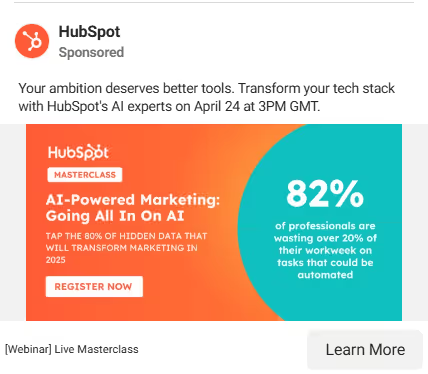
Hubspot can promote their masterclass and turn on Advantage+ for a lead-gen campaign. Meta would then expand the reach beyond their initial targeting, driving 25% more leads without increasing CPL.
.svg)


